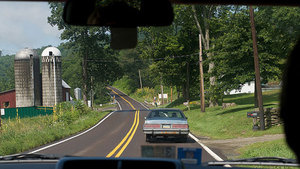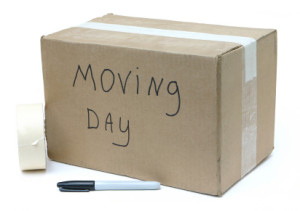By Relocation.com
If moving is hard for adults, it can even be harder for children. If you’re moving with your family, it is important that you make your children understand why you have to move and why they shouldn’t feel bad about it. The most common worries of children whether moving just across the town or moving to a ‘never-heard’ place are not being able to find new friends, getting bullied or set aside in their new school, not seeing their peers and not being comfortable with the entire place, new faces and all.
Books about Moving for Children
It is always best to inform your kids about the upcoming move as soon as possible. You need to give them time to think and allow themselves to accept it. One way to do this is to give them books about moving. There are books about moving for children that are written creatively. For sure, they would appreciate it. Other than having something to do while waiting for the moving day, they will also get the chance to understand the reason why you all have to move. Furthermore, you might not have all the time to oversee your kids during the day of move as you will be very busy looking after your belongings and making sure everything is ready. Giving them something to read can help ease their boredom and at the same time, can help them stay put.
Some Great Books about Moving for Kids:
I’m Not Moving, Mama
This is a story about a little mouse who refuses to leave his room on the very day of moving. You never can tell whether your kids are hundred percent ready to move even if you have told them about it weeks or months ahead. When the moving day comes, everything can get overwhelming for children that they end up doing tantrums, begging the entire family to just stay. This book can help your child cope with the anxiety that moving might bring.
Who Will Be My Friends?
As mentioned, one of the fears of children when confronted with the thought of moving is not being able to make new friends. This book is a story of a boy named Freddy and his journey to find new friends in the new neighborhood. It was hard in the end but eventually, Freddy was able to meet new friends and he was very happy.
We’re moving!
This story is about a little girl named Amy who has moved with her family. This book explains to children that getting comfortable in a new place takes time and effort but as days went by and new adventures come, everything will become normal as usual.
A Tiger Called Thomas
During the first days and nights in your new home, things can get very difficult for your child. The absence of friends and playmates can really make them feel alone and lonesome. Just like what Thomas felt on his moving story. But after a night of trick-or-treat, Thomas realized it’s not really that lonely being a new kid on the block.
There are more books about moving out there that your children will love. Encouraging them to read such kind of books will take away the negative feelings they have towards moving.

Image Credit: MyMove.com
By Dawn Allcot, Guest Blogger
More than 12 million unmarried people in the US have moved in with a significant other, sometimes as a predecessor to marriage—but sometimes not. Either way, combining households presents challenges…on top of all the regular challenges of moving! Follow these tips to make the moving and cohabiting process go more smoothly.
Money Matters When You Move In Together
Couples who talk about money have fewer conflicts, overall. Open discussions about money may prevent messy situations should you decide to break up or end the living arrangement. Here are a few money tips to get you started before you move.
1. Be honest about your finances, including income, expenses, debt and your credit score. If you’re buying a home or leasing an apartment together, this is mandatory. But it can also affect day-to-day living if one partner isn’t honest about their salary and then cannot afford their share of the expenses.
2. Decide how you will split expenses. There are many ways to manage money when you’re moving in with a significant other. 50/50 split, much like roommates? Joint bank account for household expenses? Or something else? If a break-up occurs, what happens to items purchased while you were together? Married couples have legal rights, but when you move in with a significant other, you both get to lay down the law.
2. Know your rights. In some cases, domestic partners are entitled to health insurance. Does your partner have a living will—and do you have the legal right to enforce it? Do you have power-of-attorney if something happens to your partner? It’s important to consider these things before moving in, especially if the relationship is serious.
Yours, Mine, Ours?
Three more tips for moving in with a significant other:
1. Discuss chores. Couples in one study reported that they fought more frequently about taking out the garbage than about money. You may not go as far as creating a chore chart as roommates might, but definitely discuss who will do what around the house.
2. Discuss how to divide personal space. Whether you’re moving in to a new apartment or home, or if one of you is moving in to the significant other’s existing space, decide how that space will be shared. Is it okay if his 800-watt stereo system makes its home in the formal living room? Will there be a man cave? Where will the crafting supplies go? Even in small apartments, you’ll want a space to call your own.
3. Decorate so the space reflects both of you. Having a discussion about the décor—and redecorating, if necessary—can prevent one partner from feeling as if they are a visitor in their own home.
This philosophy of remembering that the space belongs to both of you is the most important key to successfully moving in with a significant other.
This article was provided by MyMove.com, an online resource where you can find the information, products and moving coupons you need to streamline and save during a move.

Pass the time when moving in a car with some of these creative activities
By Richard Farrell
Special to Relocation.com
Moving across the country in car is one way to save money. However, when you add kids into that mix you have to consider that they may get bored – especially when you will be driving for hours on end. Check out some of our creative solutions to make it easier to get to your new home when driving.
Planning the Trip:
- Once you have chosen your route, it is time to calculate how long you are going to be a passenger or driver in the car. Allow for unforeseen delays such as traffic backlogs and diversions along the way. Once you know your likely journey time you can plan around it better.
- Pack a cooler of healthy snacks and lunch options for your initial ride. Once you get on the road, plan to use drive-through food outlets along the way as this will save a lot of time. Keep a couple of trash bags handy for any garbage.
- Wear sensible clothing and shoes for the journey. Choose comfortable shoes and clothing that are easy to slip off so that you can relax and let your feet breathe. Long trips will likely result in posture issues and your feet will soon remind you of the fact that you are not comfortable. Shoelaces are not practical in these circumstances.
- Should you be sharing the driving, do make sure you stop in a safe place and take time out to walk about and do some breathing exercises before you take the wheel. Include some stretching exercises too..
- Consuming of alcoholic beverages immediately before or while traveling makes for another definite “no.” Apart from affecting your reaction time it is breaking the law and your journey to your new destination will be remembered for all the wrong reasons!
7 Fun Tips to Pass Time in a Car:
- Bring CD’s. Sort through your CD collection and pick out some favorites and maybe a couple that you have not played for some time.
- Radio. Satellite radio played through your car sound system is of excellent quality and clarity. Tune in to your favorite stations before you set off.
- Books and Magazines. Kids love books and magazines. Make sure you have plenty for the journey.
- Music DVD’s. You may be lucky enough to have a sophisticated in-car system. If not, then there are plenty of good quality portable players for you to enjoy the latest movie offerings as well.
- Take Naps. Short napping is good, but sleeping the entire journey may be considered antisocial, and besides you will be missing the passing scenery and could arrive feeling less than your best.
- Food. Choose snack food that does not make a big mess. Dry snacks such as chips and peanuts or glazed dry fruit are great for the car. Avoid too much intake of food and drink or you will be stopping at every restroom along the way.
- Rotate Drivers Regularly. This is very important for long journeys. If you are the only driver you will need to consider breaking your journey with an overnight stop. In any event, do stop every 90 minutes but make sure you pull over in a safe place.


March 3rd, 2011 by
Admin
Categories:
family moving,
Moving,
Moving Day,
Moving Industry,
Moving with Kids,
Moving with Pets,
Packing,
Plan Your Move,
Plan Your Relocation,
Real Estate,
Relocation,
Relocation Data Comments:
No Comments » 
Tips to Ease Moving Day Strain When Pregnant
By Serena Norr
Sometimes you have to move, regardless of whether you want to or not. One of those special situations occurs during pregnancy. With all of the ups and downs that occur during this time, adding moving to the mix can increase a mother-to-be’s level of stress and anxiety. No need to fret, Relocation.com is here to help you make this transition as smooth as possible; whether you are moving down the block or to another state or across the country.
1. Move in the Middle:
If you have any sort of flexibility, move during your second trimester. The nausea and tiredness from the first trimester will likely have passed, leaving you feeling energized and pretty good (in general). This will be beneficial when you move, especially since your day may involve long travels, organizing boxes and dealing with movers.
2. Prepare for the Move:
In general, a successful move is determined by how organized and prepared you are. This involves planning your move by locating movers (and picking individuals that you trust), as well as obtaining boxes, packing and locating a storage facility. When looking for moving companies, ask friends and family members for referrals. You can also locate reputable and local movers online through Relocation.com. When calling moving companies, never accept an offer over the phone and be sure to research and then invite at least two-three movers to your home for an in-house moving estimate. This is the best way for movers to actually see your belongings (thus determine the price) as well as a great opportunity to interview them and ask them specific questions pertaining to your needs.
Tip: Since you are with child, make sure that you pace yourself when completing these tasks. It is best to give yourself extra time to stay on top of everything that needs to be done (writing things down helps), which will also prevent you from getting too stressed out along the way.
3. Ask for Help:
You are going to need help with your move. Even if you have a small move, be sure to ask friends and family members for their assistance with anything from packing to calling movers to locating storage. If you can, assign your helpers specific tasks in order to stay organized – having efficient and step-by-step moving checklists are great for this. You can also have your moving company do all of the packing (for an additional fee).
4. Organize your Items:
Hopefully you have some very handy helpers to assist you with your packing, but if not you can stay organized by devising a packing systems for your belongings. Through this efficient plan, organize your items into three piles: pack, donate and toss. The items that don’t work or maybe have holes in them are likely items to toss. The donate pile may be items of clothing that you no longer like or those that don’t fit to be given to friends or charity; while the keep pile are items that will move with you to your new home and can be placed in boxes. This moving system is also a great way to start fresh and get rid of old junk before the new baby. Stay organized throughout the packing process by labeling all of your boxes based on what room the items will be placed. This is also a great way for the movers to know where your belongings should go.
5. Test your Home:
If you are moving into an older home be sure to have it tested for lead. Although you likely had a home inspection, make sure that this also included looking for metals, lead and asbestos. This problem is common in older homes and even in homes that have undergone renovations where walls were simply covered and not stripped of these hazardous materials.
6. Rest and Rest Some More:
It’s finally here; your moving day! This goes without saying but be sure that you get plenty of rest before your move. During the move, be sure to take breaks to rest and stretch, use the restroom, drink tons of fluids and don’t strain your body. This includes not getting stressed out when the inevitable problem happens on moving day. Also, be sure that you are comfortable by wearing comfy shoes and loose fitting clothing and don’t lift anything heavy. Luckily, you don’t have to prove you are supermom on moving day, especially since you are prepared, organized and have a few helping hands to assist you along the way.
Don’t forget to like us on Facebook and follow us on Twitter!
• Follow us on Twitter @Relocation_News
• Become a fan of Relocation.com on Facebook

Toast to your new place!
If you have a friend or family member who has recently moved, you must have heard how difficult moving can be – ranging from deciding on a moving company to packing up all of their belongings. Although challenging, it can be one of the most exciting experiences for your friend or family member as they explore a new town or city. To help them acclimate to this new life and ease some of post-moving day stress, we suggest one of these inexpensive housewarming gifts as a way to welcome them to their new home. After all, there is nothing better than a gift from an old friend.
1. Wine Glasses. Nothing is worth toasting more than the end of the moving process. Purchase a set of two or four wine glasses from popular vendors like Create and Barrel or Bed Bath and Beyond, along with a bottle of wine. We also love the elegant wine carafe’s at Create & Barrel.
2. Coffee Mugs. If your friend isn’t a drinker, consider a set of fun over-sized coffee mugs or a practical travel mug so your new friend can get their java fix and head out on the road as they check out their new town.
3. Coffeemaker. Coffeemakers are relevantly inexpensive these days. Choose from a 10-cup or 12-cup coffee maker such as the Capresso Digital Coffee Maker or a model from Cuisinart. A nice French press is also a great gift that would be perfect with a bag of gourmet coffee.
4. Beauty Pack. For the female post-movers in your life consider putting a gift bag together with their favorite body wash, candles, lotion, nail polishes, cream, or facial mask. There is nothing she will love more than this mini-spa kit after moving day.
5. Tool Kit. A sensible gift filled with screws, a hammer, a screw driver, hooks, nuts and bolts that can help your friend as they place pictures on their walls or as they assemble new furniture. Not just for after moving, tool kits – ranging from electrical to portable models – are a practical and useful gift for anyone.
6. Food. Most likely, your friend will have gotten rid of most of his or her food before moving – at least the non-perishable items. Surprise your friend with a gift basket filled with fresh fruit, nuts, crackers and some cheese. If you live far from each other, you can order fruit baskets online from popular retailers like Edible Arrangements or sweets such as cookies and cakes from Mrs. Fields.
7. Plants. Greenery really has a way to spruce up a home – especially as your friend’s home is filled with unopened moving boxes. You can have plants delivered from a local nursery or if you live close-by consider bringing a bouquet of flowers to their new home after moving.
8. Pictures. Pictures such as an image of you and your friend or a scenic painting make for a nice personal gift. Consider ordering a 8 x 10 image and purchase a new frame for your friend. This warm gift may even inspire your friend to start decorating their new place.

Have too many clothes? Swap them or give them away before you move.
By Serena Norr
Now that you are moving you can actually see how much stuff you own; and most likely, it’s a lot of items that you didn’t even realize that you had. The beauty of moving is that you not only get a chance to start fresh – whether that be for a new job or the desire to explore a new town – but you also can get rid of extra baggage in the form of your old belongings. One way to get rid of your items is to have a swap party. This is a great way to have an intimate and free clothing exchange. Add some food and drinks and you have a free going away party – as your old clothes find a new home. Party down this weekend with Relocation.com’s clothing swap party guide.
1. Gather your stuff. Before the party can happen, you’ll have to organize your items into piles of what you want and don’t want. As part of your packing plan, consider what items are of value but those that you no longer have use for. This might include an expensive jacket that you no longer wear or old worn in jeans. Devise these items into a pile for your party. If you have time, wash and fold these items beforehand.
2. Organize a size box or items by type. During the moving process, organization is the name of the game. Place your items size into various boxes – this will also make it easier for your guests to know where to place their clothes. If you are swapping other items, consider organizing them by type – so books would go with books, DVDs with DVDs, etc.
3. Send out the invite. Now that you know what items you want to get rid of (er, swap), it’s time to send out the invitation. You will know how many invites to send out based on the size of your home – or wherever you may be having it. Send out a mass email or an Evite to organize your guest list. In your invite, you can also ask your friends to contribute to the swap by bringing a food item or drink – no one wants to swap on an empty stomach.
4. Get the list together. Now that you know who is coming, set up your list and do a little shopping. Since you have assigned your friends to bring some food and drink items, your shopping should be minimal. Consider some basics like hummus and pita bread, carrots, chips, wine or beer, water and fruit.
5. Party time, excellent. It’s almost time to partay! Before your guests arrive, arrange all of your clothes into their appropriate size box (small, medium and large) and set up your food and drinks. As your guests arrive, explain your organization system and start swapping!
With any luck, your old clothes, knickknacks and books will have found a new home – clearing up some space making it easier (and lighter) for you on moving day. Taking something is also not a big deal – but be sure to choose wisely. You don’t want to end up with more items than you had before the swap!